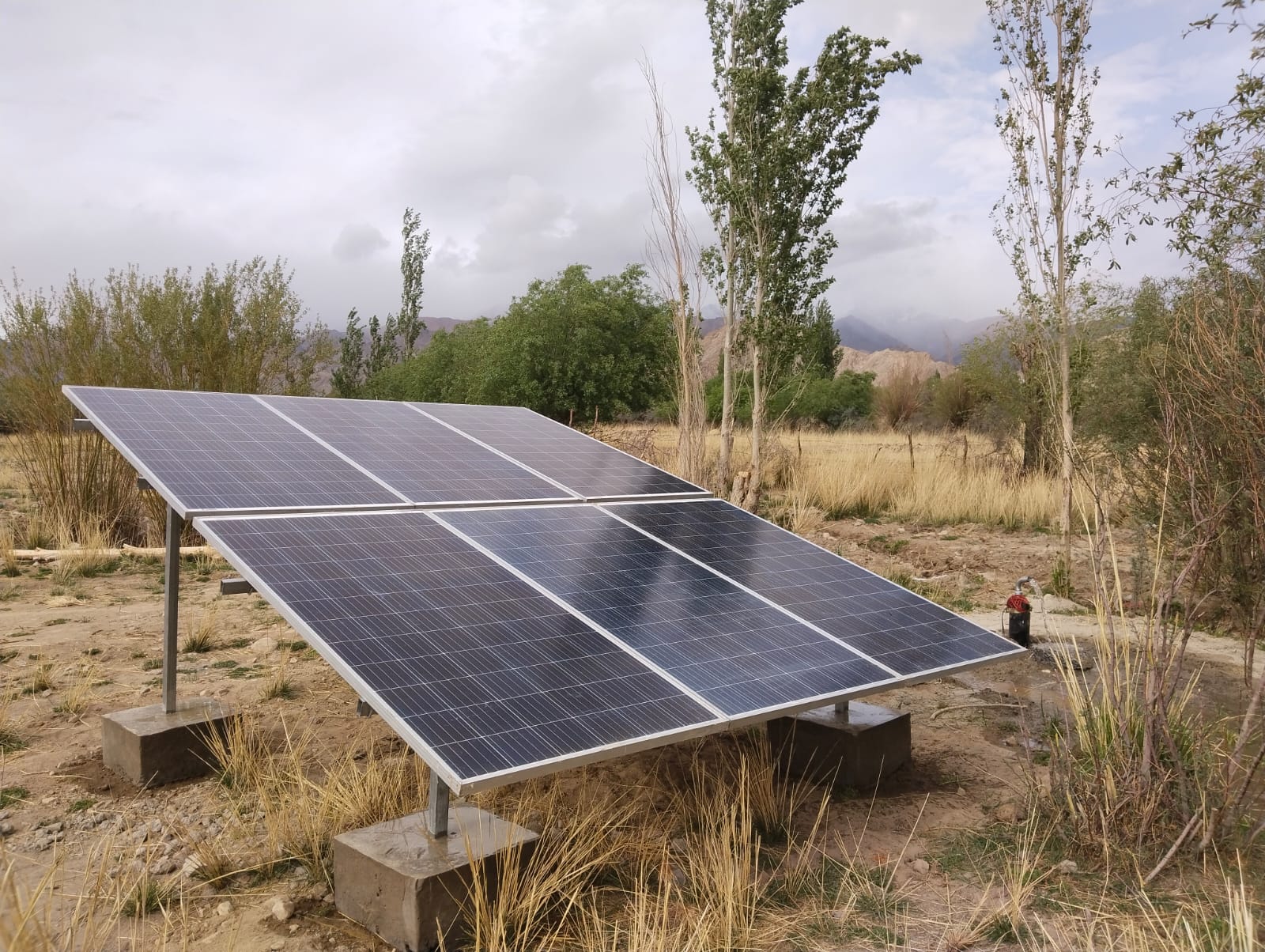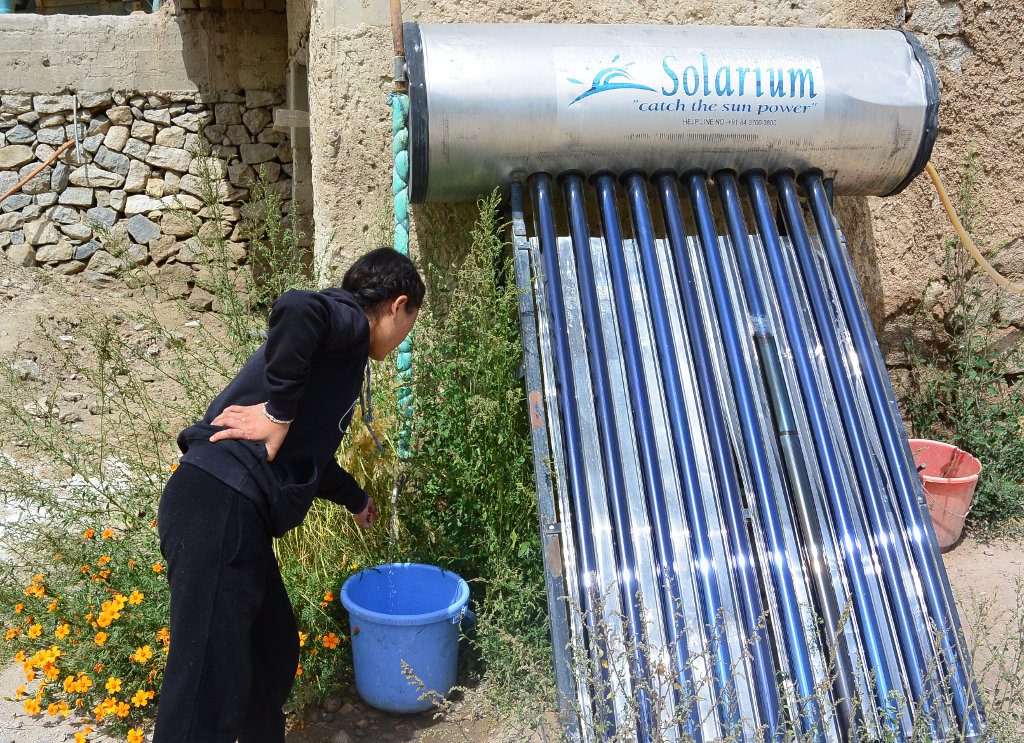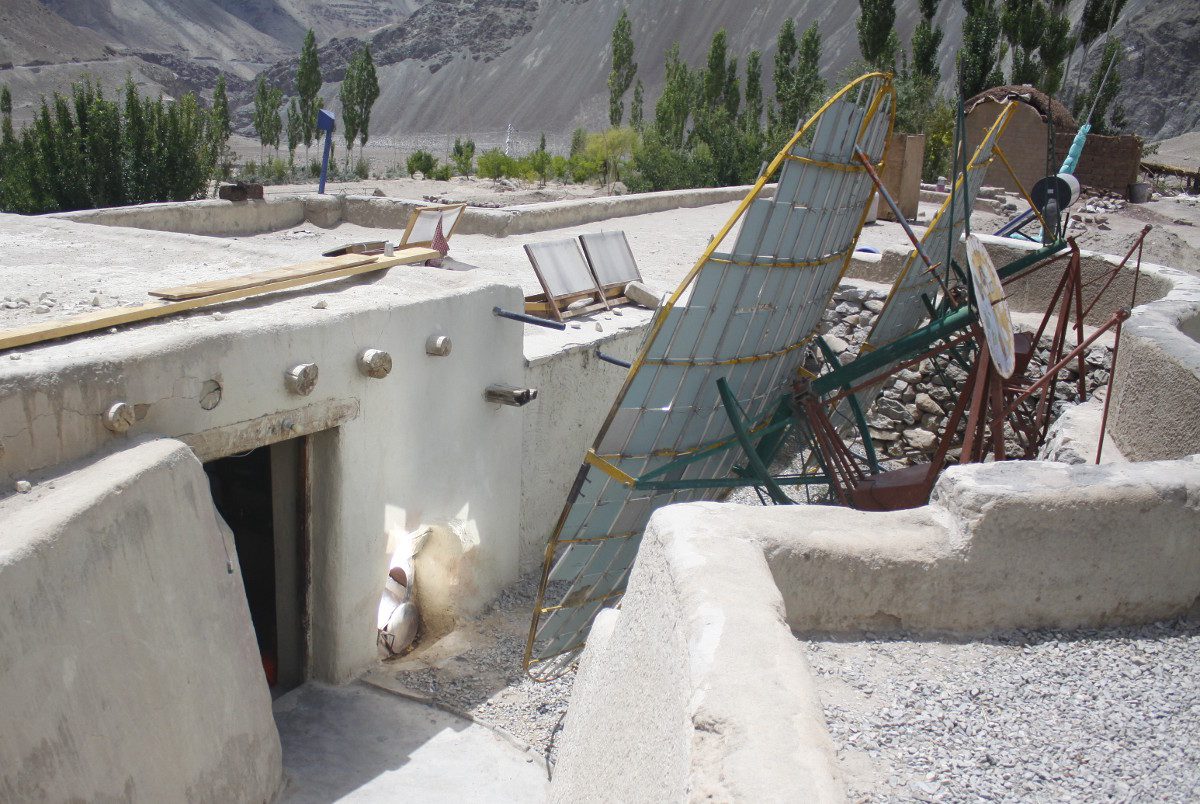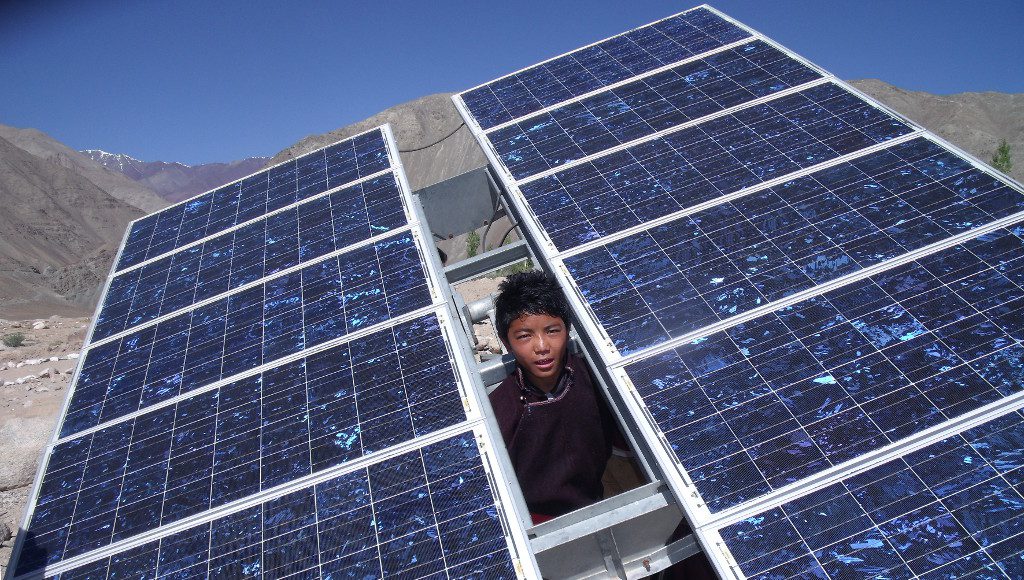Ladakh, a remote and rugged region in northern India, has recently become a beacon of sustainability in the Himalayas. Embracing solar energy has allowed the region’s isolated villages to access reliable, eco-friendly electricity for the first time. Through pioneering solar initiatives and unwavering community support, Ladakh’s journey into sustainable living has transformed lives, inspired travelers, and become a model for off-grid solar solutions in remote areas.
Introduction to Solar-Powered Ladakh
In Ladakh, the introduction of solar power has brought light to isolated villages previously untouched by the energy grid. This change has been nothing short of revolutionary, enhancing quality of life, creating jobs, and fostering an eco-friendly approach to living that aligns with the natural beauty of the region. Ladakh’s commitment to sustainable development through solar power has significantly reduced the need for diesel generators and wood fuel, preserving the environment and improving the air quality across villages.
The Importance of Renewable Energy in Ladakh
Why Solar Energy Works Best in Ladakh
Ladakh is ideally suited for solar power. Located at a high altitude with more than 300 days of sunshine per year, the region has optimal conditions for solar panel efficiency. The expansive, uninhabited landscapes and clear skies make it an ideal setting for solar projects, which can power villages far from centralized grids.
Solar energy not only addresses the unique geographical and energy needs of Ladakh but also fosters a resilient infrastructure. By building off-grid solar solutions, Ladakh is tackling energy scarcity and establishing a clean, reliable power source for its villages.
Solar Power Projects Revolutionizing Ladakhi Villages
Major Solar Initiatives Empowering Remote Villages
Several impactful solar projects have been launched in Ladakh to bring renewable energy to its remote communities. The Ladakh Renewable Energy Development Agency (LREDA) and other organizations have played a significant role in developing solar-powered villages. Through government-backed programs and NGO-supported initiatives, solar microgrids now power households, schools, and hospitals in villages once dependent on candles and kerosene lamps.
One notable initiative is the “Solar Himalayan Village Project,” which has equipped over 1,000 households with solar-powered lighting and heating systems, significantly improving the quality of life.

Case Study: The Impact of Solar Energy on Tangtse Village
Tangtse, a small village in Ladakh, is an inspiring example of solar power’s impact. Previously, the village had minimal access to electricity and relied on expensive diesel generators. Through a combination of community funding and government support, Tangtse received a solar microgrid in 2021. Now, families enjoy stable electricity, allowing children to study at night and businesses to operate sustainably.
“I used to spend hours gathering wood for heating. With solar power, my family now has access to clean, reliable energy for the first time.” – Lobsang Tsering, Farmer, Ladakh
How Solar Power is Transforming Rural Life in Ladakh
Off-Grid Electricity and Solar-Powered Homes
In Ladakhi villages, off-grid solar systems provide crucial energy access. Solar-powered homes in these remote areas now enjoy consistent lighting, phone charging, and even small-scale refrigeration, a luxury previously inaccessible to these communities. Families no longer rely on toxic, costly fuel sources like kerosene, making their homes safer and healthier.
The shift to solar energy has also brought sustainable growth. For example, locals in Sumda Chenmo have been able to open a small community market powered by solar electricity, a project that created jobs and boosted local economic activity.
Advancements in Solar-Powered Infrastructure
Beyond homes, advancements in solar infrastructure have brought renewable energy to schools, clinics, and community centers. Solar-powered lights illuminate streets, and public facilities are powered by solar microgrids, creating self-sustaining, eco-friendly villages. These solar-powered hubs have sparked an interest in further community projects, encouraging sustainable energy adoption throughout the region.
“The solar lights in our village streets make it easier for us to gather as a community, even in the evenings. It has changed how we live.” – Namgyal Dolkar, School Teacher, Ladakh

Environmental and Economic Impact of Solar in Ladakh
Positive Environmental Impact of Solar Energy in High-Altitude Areas
Using solar energy in high-altitude areas like Ladakh has profound environmental benefits. By reducing dependence on wood-burning stoves and diesel generators, Ladakhi villages have lowered their carbon emissions and preserved local forest resources. This commitment to renewable energy not only benefits the environment but also helps combat climate change by reducing pollution in sensitive high-altitude ecosystems.
Economic Empowerment and Job Creation Through Solar Projects
Solar initiatives have created numerous local job opportunities in solar panel installation and maintenance. Training programs for locals in solar technology provide new skills, enabling communities to maintain their infrastructure sustainably. In Leh, for example, a solar panel repair workshop now employs 15 residents trained through an NGO-sponsored program, creating a long-term source of income and employment for the community.
“Learning to install and repair solar panels has given me a stable income and allows me to help my village.” – Rinchen Namgyal, Solar Technician, Ladakh
Challenges and Innovations in Solar Energy for Ladakh
Overcoming Installation Challenges in High-Altitude Regions
Despite its advantages, installing solar panels in Ladakh’s high-altitude terrain is challenging. The cold climate, rugged landscape, and remote locations make transportation and installation costly. However, through the use of lightweight and durable solar technology, many of these barriers are being overcome. The innovations driving solar adoption in Ladakh have made decentralized energy systems more accessible, allowing even the most isolated villages to benefit from renewable energy.
Innovations Driving Solar Adoption in Ladakh
Innovative solutions like solar water heaters, efficient energy storage, and modular solar panels adapted for harsh climates have enabled successful installations in extreme environments. Thanks to these solar innovations, Ladakh’s solar-powered journey continues to expand, with the potential to reach all remote communities.
“Despite the cold winters, our solar systems work year-round. This technology has empowered our village.” – Tashi Phuntsok, Store Owner, Ladakh

The Role of Local and Government Support in Solar Projects
Government Initiatives for Renewable Energy in Ladakh
Government policies and programs are instrumental in expanding solar infrastructure across Ladakh. The Indian government, alongside the Union Territory of Ladakh, has launched initiatives that subsidize solar panels for households and encourage eco-friendly projects through financial incentives.
The Role of NGOs and Local Organizations in Promoting Solar Power
NGOs have provided substantial support for solar projects, from funding to training programs. Organizations like Global Himalayan Expedition (GHE) have enabled entire villages to adopt solar power, providing not just technology but also technical skills for residents to maintain these systems. The combined effort of government and NGOs has been crucial in turning Ladakh into a solar-powered success story.
“Thanks to support from NGOs, our village has the skills and tools to manage our own energy.” – Jigmet Angmo, Community Leader, Ladakh
Solar Energy and Sustainable Tourism in Ladakh
Solar-Powered Initiatives Boosting Eco-Tourism
As Ladakh embraces solar energy, it has also become a popular destination for eco-conscious travelers. Visitors are drawn to sustainable tourism experiences, such as staying in solar-powered guesthouses and learning about renewable energy solutions. This shift to eco-tourism brings additional income to Ladakh’s villages, benefiting local communities.
Visitor Experiences in Solar-Powered Ladakh Villages
Many travelers are now choosing to visit solar-powered villages to witness sustainable living in action. Some participate in volunteer programs to assist in solar installations, while others contribute to local economies by staying in solar-powered accommodations.
“Staying in a solar-powered guesthouse and seeing sustainable living up close was unforgettable.” – Sophie Wilson, Environmental Scientist, UK

Future Prospects for Solar-Powered Villages in Ladakh
Expanding Solar Infrastructure Across Ladakh
As more villages adopt solar technology, Ladakh’s government and organizations aim to expand solar infrastructure throughout the region. This expansion could bring renewable energy to the farthest corners of Ladakh, creating self-sustaining villages across the Himalayas. The future of solar energy in Ladakh looks promising as more communities experience the benefits of clean, reliable energy.
Solar Energy’s Role in Ladakh’s Climate Goals
Ladakh’s commitment to solar energy plays an essential role in its climate goals, as the region strives for carbon-neutral villages. By harnessing the power of the sun, Ladakh is reducing emissions and contributing to global climate change mitigation efforts, paving the way for other high-altitude areas to adopt similar strategies.
Conclusion: The Path to a Sustainable Future in Ladakh
Ladakh’s transition to a solar-powered, sustainable future is a remarkable journey that reflects the resilience, innovation, and dedication of its people. Through solar energy, Ladakh has redefined rural life, created economic opportunities, and protected its natural environment. As travelers and supporters of sustainable initiatives, we can contribute to Ladakh’s green future by choosing eco-friendly tourism and supporting renewable energy projects. The sun has truly become Ladakh’s most valuable resource, lighting the way toward a brighter, more sustainable tomorrow.

Frequently Asked Questions (FAQs)
1. What are the main solar power initiatives in Ladakh?
Ladakh has implemented several large-scale solar projects with support from the government, NGOs, and local communities. These initiatives range from solar microgrids powering entire villages to community-owned solar panel installations.
2. How does solar power improve life in remote Ladakhi villages?
Solar power provides reliable electricity, reducing dependence on kerosene and wood, which makes homes safer and healthier. It also powers essential community services like lighting and water heating.
3. What environmental benefits does solar energy bring to Ladakh?
By replacing wood-burning and diesel generators, solar energy reduces pollution, preserves forest resources, and helps Ladakh move closer to carbon neutrality.
4. How do government and local organizations support solar projects in Ladakh?
The government provides subsidies and financial support, while NGOs offer technical training and resources to ensure sustainable, locally managed solar solutions.
5. What challenges do high-altitude areas face with solar energy?
The extreme cold, harsh terrain, and transportation difficulties make installation costly. Innovations in lightweight and modular solar panels are helping overcome these challenges.
6. How can travelers experience solar-powered villages in Ladakh?
Eco-conscious travelers can stay in solar-powered guesthouses and participate in tours that showcase sustainable living practices, supporting the local economy while learning about renewable energy.








